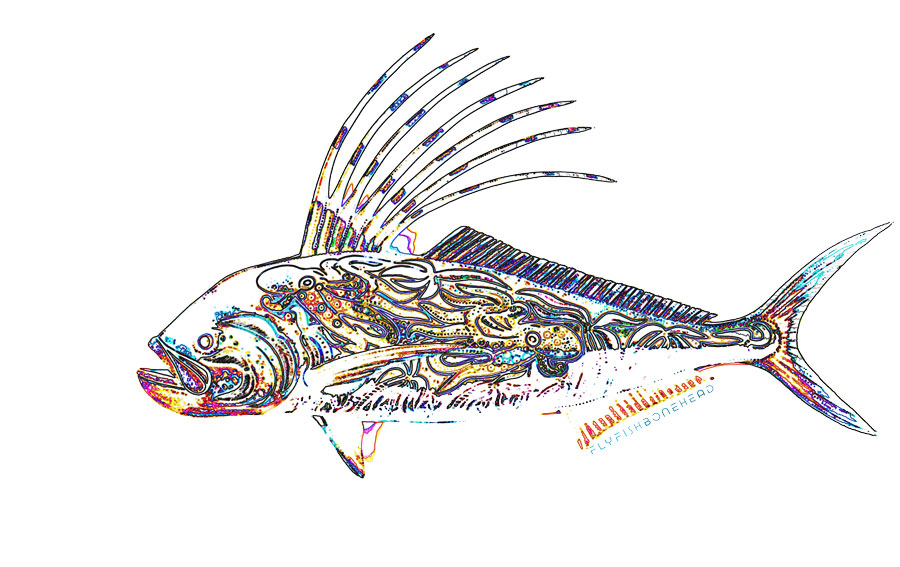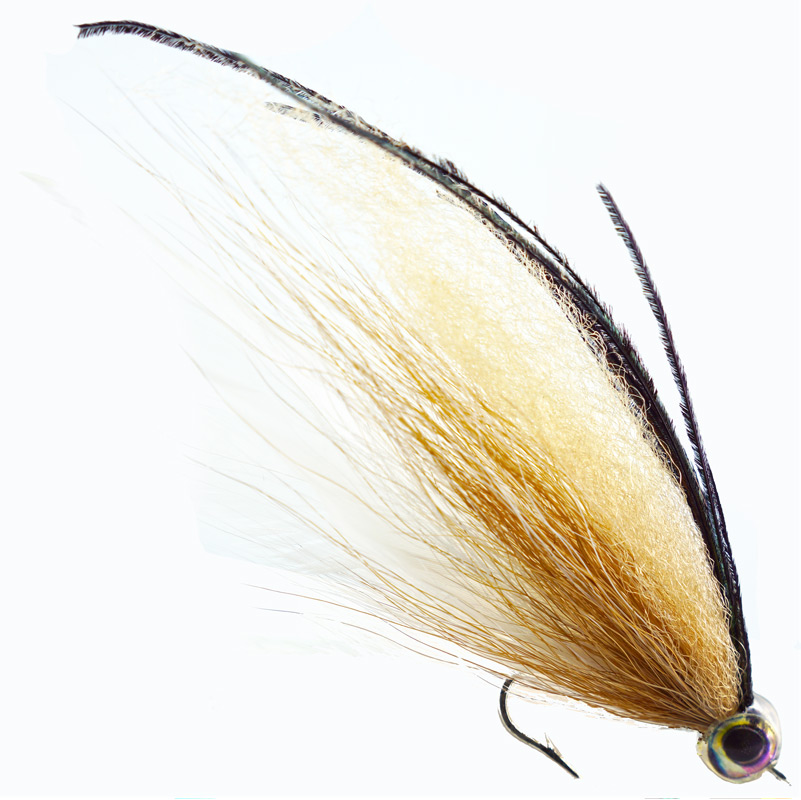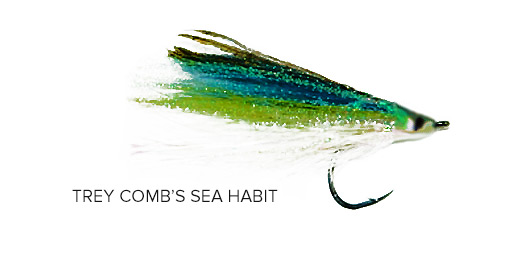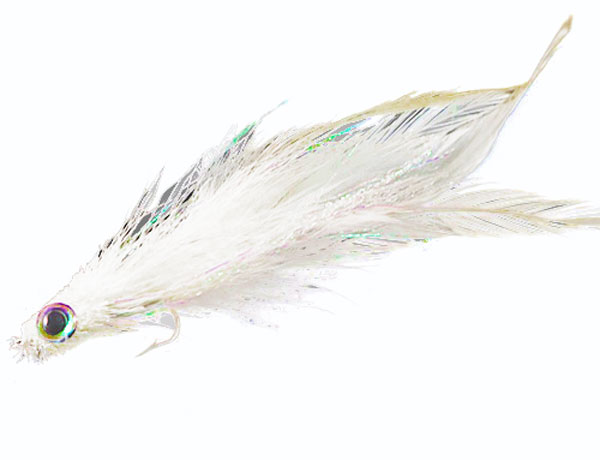Roosterfish, for very good reasons, are quickly becoming very a popular target among saltwater fly fishing enthusiasts. They have a very noticeable appearance, big profile body covered with silvery blue scales and distinctive black stripes. This shiny bag of Braun and speed is topped with a crown of seven long black dorsal spikes that can flair up or lay flat at will. During the hunt and chase in the shallow waters and beaches, Roosters will sometimes flair the dorsal upward which is a really special thing to see. In additional to their unique appearance, the Roosterfish is an inshore bruiser that is gaining popularity. They are fierce hunters in shallow water with excellent eyesight and have been seen beaching themselves while chasing down bait. Roosters never give up on a chase or a fight. Most importantly they eat flies fairly regularly. Anglers often talk about the fight of a bonefish or redfish, but Roosterfish can hold their own with the best of them. They are truly one of the best kept secrets in salt water fly fishing to date.
Roosters have a fairly broad range but are mostly a south southeastern Pacific fish populating the shore line down the Central and South American Coast as far as Peru including the Galapagos Islands. They are very commonly found through Central America in places like Costa Rica, Panama, Columbia, Peru and as far north as Mexico’s Pacific side (Baja Coast) where most of the large Roosters and world records have been caught. They are rarely seen north of Baja California or Mexico. While they can be caught in the Caribbean Sea, they are limited to southern Costa Rica, Panama and Colombia. It is assumed that the Panama Canal allowed them access to the other side but no one knows if this has been confirmed or just rumored but there have been Roosterfish caught on the Caribbean side. Some of the biggest Roosterfish can be found along the rocky coasts of Panama and Costa Rica, but Mexico’s Sea of Cortez is really popular. They frequent rocky points and beaches and a key to locating Roosters is to find forage areas that give the fish access to deep water. This applies to most species though and is not exclusive the Roosterfish. The Cabo San Lucas big-fish habitat ranges from Ranchito about 15 miles south of Los Muertos, up through the waters of Cerralvo Island and Baja beaches parallel to Cerralvo Island and as far up to Las Pillar if you’re looking for a trophy.
FISHING FOR ROOSTERFISH
The size of a Rooster can approach 4-5 feet (less than 2 meters) in length and can weigh from 6 lbs. to 100 lbs. (~46kg). The average caught is about 20-25 lbs. (~10kg), any fish between 35-50 lbs. (~15-25kg) is quite a catch and we promise will be a very memorable experience. Even if you have the terrible misfortune of only catching a 15 pounder (~5kg) you won’t ever forget it, especially if you’re fishing a 7 or an 8 weight that day. Roosters behavior varies based on where the encounter is. When in deeper water or along rock walls it’s mostly blind casting this is not nearly as fun. They are still hard hitting and make long powerful runs but it’s too similar to bait chunking and really takes the excitement level of the cast, set and hook to a mere simmer. They seem to be more active and more aggressive in the shallow waters along beaches which are where the fast paced, chaotic excitement begins. Get ready for a show. It’s possibly because of the fierce competition among small schools of Roosterfish or maybe because they came to the flats for just one reason, to feed. They are usually accompanied by Jack Crevalles and other less notable flats species that hunt along beaches and don’t be surprised if you catch a few of those by accident. We briefly mentioned how unpredictable they are when they are busting on food in the shallows but we should elaborate. What makes them extra exciting is their purely erratic, completely unpredictable behavior and blinding speed. There is no telling where they will pop and bust on a bait or even how many different places they will show. People mention how goalies in hockey have to have their “head on a swivel,” you need to do the same when fishing for Roosterfish. They can change direction several times during on cast and frustrate even the most patient angler. This is why you will probably catch other species too. While casting to a Roosterfish you might throw to where he was and what was following him e.g. the Jack Crevalle. It’s sometimes frustrating, but no less frustrating then getting a bonefish close to the skiff only to watch a lemon shark crush it. Roosterfish are not shy about eating a fly and make sure you have plenty of them because they chew them up as do every other species on the flat. The technique is very similar to other shallow water fly fishing in salt water, spot the fish and present the fly. You must keep the fly moving, fast strips seem to entice them and get them chasing and if it stops the chase is over. Some use the two handed strip technique and starting stripping before or right as the fly hits the water. Others just strip fast with one hand, it’s really preference.The flies used are typically baitfish patterns, poppers, Clouser minnows, crease minnows and even some redfish flies.
Some of our favorites includeGary Bulla’s Tuna Tux (Black/white Olive/white)\
Gary Bulla’s Papgalo (Tan)
Trey Combs Sea Habit
The Rat by Grant Hartman
Note: It’s not unusual to “live chum” for Roosterfish in order to get their attention. Many captains or even wading surf fisherman will take live bait when fly fishing for Roosters in order to stimulate the waters and begin the feeding frenzy. You just throw out a few at a time to draw them in then let the madness begin. Fishing for Roosterfish will definitely be a challenge followed by an amazing reward. The initial strike is explosive and violent and the run that ensues will not disappoint. They run hard, really hard and pull like mad once hooked. We think they should definitely be ranked among the top 5 of the strongest of fish of the flats & beaches.







